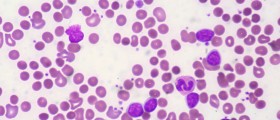
The erythrocyte sedimentation rate, also known as ESR, is a diagnostic blood test that helps to identify conditions responsible for inflammation, pain and other problems. This test is also called a sedimentation rate or Biernacki Reaction. The tests measures the rate at which the red blood cells sediment in a period of one hour. This test usually reveals inflammatory activity in the body, and it may help to diagnose and monitor the course of an inflammatory disease.
Why is it done?
Nowadays, modern medicine uses more specific measures of inflammatory activity. In the past, the sedimentation rate tests were used more frequently. Today, doctors use this test if they suspect a patient has; giant cell arteritis, polymyalgia rheumatica or rheumatoid arthritis. The test is also used to determine the stage and severity of inflammatory diseases as well as to monitor the effects of the treatment. Some surgeons normally order this test before a patient undergoes a surgical procedure. Liposuction is an example of surgical procedure in which doctors need to determine ESR levels prior to the surgery.
How it is done?
To perform a test, anticoagulated blood is placed in a tall, thin and upright tube known as the Westergren tube. Red blood cells known as erythrocytes will normally settle slowly to the bottom. During the blood test, the rate at which the red blood cells fall is measured and reported in mm/h. If the inflammation is occurring somewhere in the body, the cells will clump together and gain additional density and weight. Consequently, the cells will settle to the bottom more quickly, indicating the presence of the health problem. Greater density of the red blood cells indicates the greater inflammatory response of the immune system.
Test results explained
Normal results of an ESR test depend on the patient’s age and gender. For men under 50, the normal result is less than 15 mm per hour. For women of the same age, the normal result is considered to be less than 20 mm per hour. For men over the age of 50, the normal test result is less than 20 mm per hour. For women over the age of 50, the normal result is less than 30 mm per hour.
Abnormal levels are sometimes caused by conditions such as chronic kidney disease, pregnancy, lupus and other autoimmune diseases, thyroid disease and other conditions that cause inflammation of the body tissues. Extremely high ESR levels may indicate blood vessel death, giant cell arteritis, multiple myeloma and increased blood fibrogen levels.
On the contrary, low ESR levels are caused by a decreased fibrinogen, sickle cell anemia and congestive heart failure.
















Your thoughts on this
Loading...